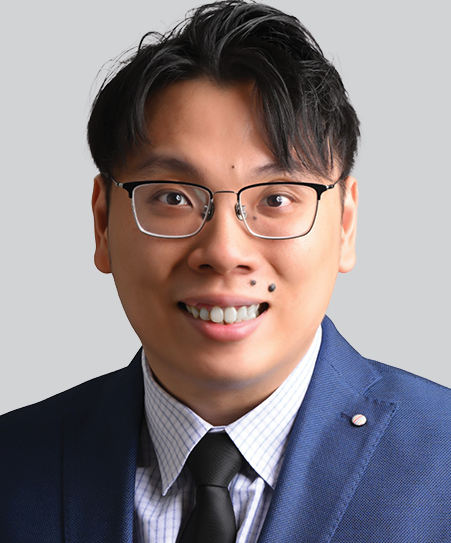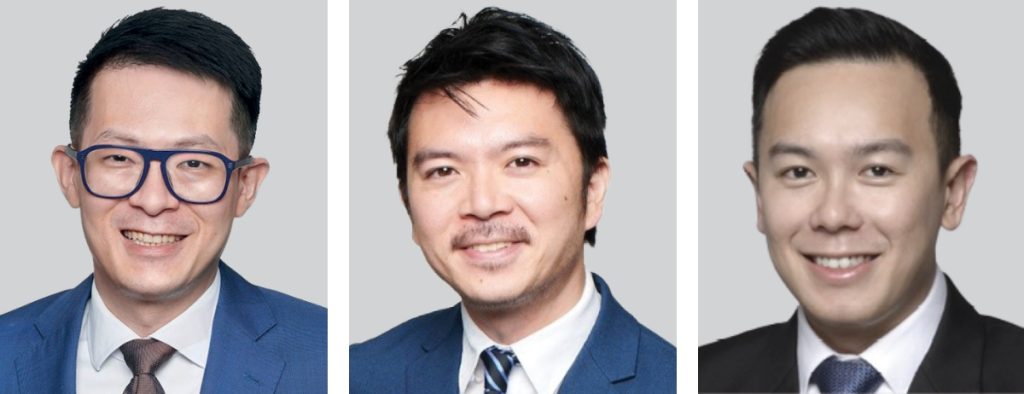


TAKEAWAYS
From income tax to goods and services tax (“GST”), 2023 marked a year of intriguing judgements that reshaped the contours of Singapore’s taxation jurisprudence.
In the first part of the popular Singapore Tax Cases seminar organised annually by the Singapore Chartered Tax Professionals, Accredited Tax Advisor (Income Tax) & Accredited Tax Practitioner (GST) Allen Tan, Principal; Jeremiah Soh, Local Principal; and Shawn Joo, Senior Associate, from Baker & McKenzie.Wong & Leow discussed two notable income tax cases of 2023.

The two appellants in this case were nephrologists. Prior to 31 January 2013, they were shareholders of five companies (the “Sale Companies”) which owned and operated 16 clinic dialysis centres (“CDCs”). They also acted as Medical Directors of the CDCs responsible for running the clinics and providing medical services.
Pursuant to a Sale and Purchase Agreement dated 31 January 2013 (“SPA”), the appellants sold all their shares in the Sale Companies (the “Sale Shares”) to A Pte Ltd (“Buyer”) for a total consideration of S$50 million (“Purchase Consideration”).
The Purchase Consideration was payable to the appellants based on the following milestones:
If either of the appellants ceased for any reason to be Medical Directors of any of the CDCs during the two-year period immediately after the completion date (the “Initial Period”), the relevant milestone payments under the SPA would no longer be payable to them.
The appellants acted as Medical Directors in accordance with the SPA and were each paid S$1.5 million in 2014 and 2015.
In March 2019, the Comptroller of Income Tax (“CIT”) issued Notices of Assessment on the S$1.5 million received by each Appellant for Year of Assessment (“YA”) 2015 and YA 2016. The appellants objected on the basis that the payments were part of the Purchase Consideration from the disposal of the Sale Shares, and were therefore capital receipts that are not taxable.
The Income Tax Board of Review’s (the “Board”) decision
Construction of the SPA
The Board agreed with the appellants that the nature of consideration should be determined objectively, starting with the text of the SPA. Nevertheless, it found that the S$6 million payment was not unfettered consideration for the shares since the payment was conditional upon the appellants staying on as Medical Directors in the Initial Period.
Relevance of pre-negotiation correspondence and documents
The Board noted that prior to the SPA, parties had entered into a memorandum of understanding (“MOU”) which stated that the S$6 million was payment for services rendered by the appellants as Medical Directors, separate from the consideration of shares at S$44 million. In addition, pre-negotiation email correspondence also revealed that the appellants had sought to re-label the S$6 million service fees as part of the Purchase Consideration to avoid paying tax.
In arriving at its judgement, the Board relied on the pre-contract negotiations and documents, which it found to be relevant in determining the true nature of the S$6 million as payment for the appellants’ services as Medical Directors.
Substance of the transaction
The Board found it unrealistic that “free services” were provided in an arm’s length transaction and noted that it would have been more credible if the appellants had been separately compensated at arm’s length for the services. The S$6 million which the appellants received under the SPA also coincided with the annual fees that they received prior to the sale as Medical Directors.
Separately, the Board also considered that the Buyer had taken the accounting and tax position that the purchase consideration for the Sale Shares was S$44 million and S$6 million was payment for services.
Overall, the Board was not persuaded that (1) the entire S$50 million should be regarded as payments for the shares, and (2) the subsequent service by the appellants in the two-year Initial Period as Medical Directors was purely gratuitous. Based on a plain reading of the SPA, supported by the pre-negotiation evidence and the position adopted by the Buyer for accounting and tax purposes, the Board concluded that the consideration for the purchase of the shares was S$44 million and the remuneration for services of the appellants during the Initial Period was S$6 million.

The taxpayer, Singapore Cement Manufacturing Company (Pte) Ltd, is in the business of providing bulk deliveries of cement via cement tankers. In 2011, the taxpayer began to import a new type of cement and decided to construct a new silo (the “Silo”) to store and distribute the new type of cement.
The construction of the Silo took place between the financial years of 2013 and 2015. The taxpayer incurred construction costs, expenditure on mechanical and electrical equipment, and incidental professional fees. In 2016, the taxpayer applied for an advance ruling to confirm that the Silo would qualify as “plant” and therefore be entitled to capital allowance under Section 19A of the ITA.
Subsequently, the CIT allowed the capital allowance claim in relation to the mechanical and electrical equipment installed within the Silo that performed operational functions relating to the dispensing of cement (collectively, the “Equipment”). The capital allowance claims on the structural assets (collectively, the “Disputed Assets”), such as the silo walls which formed the structure of the Silo, were however disallowed.
The High Court’s decision
Whether the Board erred in its finding of the Silo’s operational function
The taxpayer claimed that the Silo performs six active operational functions in relation to the cement (namely, transportation, control, filtration, batching, preservation, and protection).
The High Court noted that the first four functions of transportation, control, filtration and batching are performed only by the Equipment, whereas the remaining two functions of preservation and protection can be equally performed by, and are in fact, integral to a building. The High Court found that the functions of protection and preservation should not be allowed as a factor pointing in favour of a plant characterisation, as this would blur the distinction between plants and buildings.
In this regard, the High Court affirmed the Board’s view that the function of the Disputed Assets is storage and housing.
Whether the Silo should be regarded as an indivisible whole
Section 19A of the ITA does not preclude the CIT from classifying parts of the Silo as separate assets for differentiation for tax purposes. The High Court stated that this power (to classify parts of an asset as separate assets) was a necessary power without which every asset must be classified on an all-or-nothing basis.
The High Court held that the CIT’s assessment of the Silo as a building with machinery is a fair and reasonable assessment, and that the Board did not err in its finding that the Equipment is separate from the Disputed Assets.
The High Court concluded that the Board was not wrong to find that the Silo is a building and not a plant. As the findings of the Board, after a site visit to the Silo, cannot be said to be unreasonable, the taxpayer’s appeal was therefore dismissed.
As new judgements continue to reshape the contours of Singapore’s taxation jurisprudence, it is essential for taxpayers to stay abreast of the latest tax cases. Meanwhile, stay tuned for Part 2 of our article (to be published in June), for more notable 2023 tax cases.
Felix Wong is Head of Tax, Singapore Chartered Tax Professionals (SCTP), and Joseph Tan is Tax Manager, SCTP.